The 8 Healthiest Berry Varieties, According to Registered Dietitians
From strawberries to acaí berries, you can't go wrong with these nutrient-packed fruits.
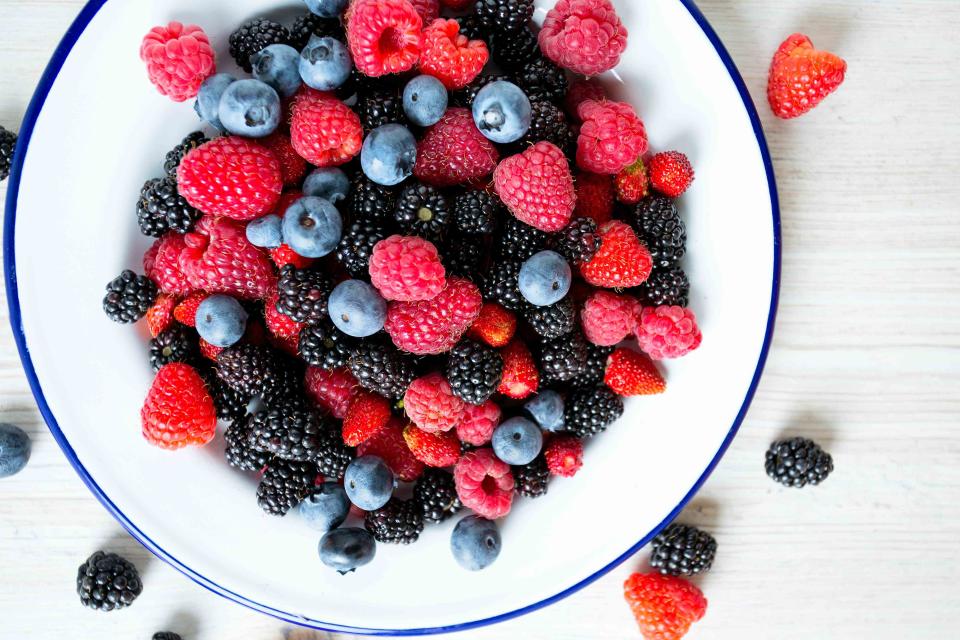
Diana Taliun / Getty Images
There’s a lot to love about berries: They’re tasty, sweet, and teeming with good-for-you compounds. Berries are also delightfully versatile—they can be added to baked goods, blended into smoothies, cooked in savory dishes, or eaten by the handful. But with so many berries to choose from, you might wonder if there’s one, best choice. We tapped dietitians to learn about the healthiest berries you can eat, plus how different berries compare to each other (and whether it matters if they’re fresh or frozen!).
Related: The 12 Healthiest Fruits To Eat, According to the Pros
How Many Berries Should You Eat a Day?
Overall, berries are known as superfoods, and for good reason too—they’re packed with essential nutrients. Case in point: “Berries are a rich source of micronutrients, including vitamins, minerals, and antioxidants,” says Maddie Pasquariello, MS, RDN. They offer plenty of fiber, which is key for optimal digestion, and antioxidants, which fight oxidative stress in the body.
It’s perfectly safe and healthy to eat berries every day (or even multiple times a day). The “ideal” serving size of berries depends on your health goals and the rest of your diet, but in general, a single serving of fresh or frozen berries is about one cup, or 100 to 150 grams, says Pasquariello. For context, this equals about eight medium strawberries, one 3.5-oz. packet of acai puree, and 3 to 5 tablespoons of dried goji berries, she notes.
Of course, this doesn’t mean you absolutely need to eat berries every day to get the nutrients listed above. In other words, you can still have a healthy diet with or without berries, as many other fruits and vegetables provide similar benefits, Pasquariello says. But if you happen to love berries—or if you want to add more to your routine—you are more than welcome to enjoy berries every day.
Related: 16 of the Highest Fiber Fruits, Plus Delicious Ways to Eat More of Them
Fresh Berries vs. Frozen Berries: Which Is Better?
Contrary to popular belief, it’s not necessary to eat fresh berries for the biggest nutritional punch. According to Umo Callins MS, RD, CSSD, CPT, sports and fitness dietitian and founder of Well Rooted Health and Nutrition, fresh and frozen berries have comparable nutritional profiles. In some cases, the frozen versions might be even higher in nutrients.
Here’s why: When fresh produce (such as berries) is picked at peak ripeness, it has the highest nutritional content. Over time, however, the produce will technically lose some nutrients due to the natural spoilage process. In contrast, when produce is picked to be frozen, it’s harvested and flash-frozen at peak ripeness—which, again, is the time it has the most nutrients. The freezing process preserves the nutrients and actual fruit, resulting in a long shelf-life. Plus, frozen berries are great options when berries in general are out of season (i.e., during the cooler months).
Related: How to Store Blueberries So They Stay Juicy and Delicious
Top Healthiest Berries to Eat
Blueberries
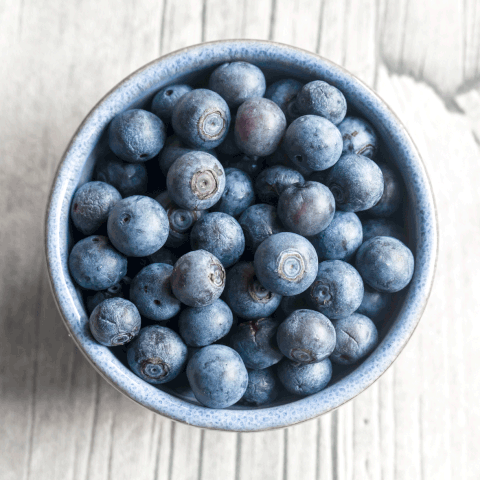
Getty Images
Blueberries might be tiny, but don’t let their size fool you; these juicy orbs are teeming with essential nutrients. For starters, they’re high in vitamin C and vitamin A, which are needed for top-notch immunity. According to Pasquariello, blueberries also offer minerals like calcium, magnesium, and potassium, which contribute to healthy bones, muscle contractions, and blood pressure, respectively.
Most notably, blueberries are packed with anthocyanins—antioxidant plant pigments that give blue, purple, and red produce their vivid color. Antioxidants (like anthocyanins) work to reduce the risk of chronic disease, as they fight free radical damage in the body, Paquariello explains.
Thanks to their sweet, floral taste and small size, blueberries are easy to add to recipes. “Blueberries pair well with creamy foods like yogurt and cottage cheese, and [they] provide a satisfying burst of flavor when added to pancakes, waffles, cereal, and muffins,” she says. You can also add blueberries to savory dishes, like salads, for a burst of tart-sweetness.
Related: The 9 Best Fruits and Vegetables for a Healthy Immune System, According to RDNs
Blackberries
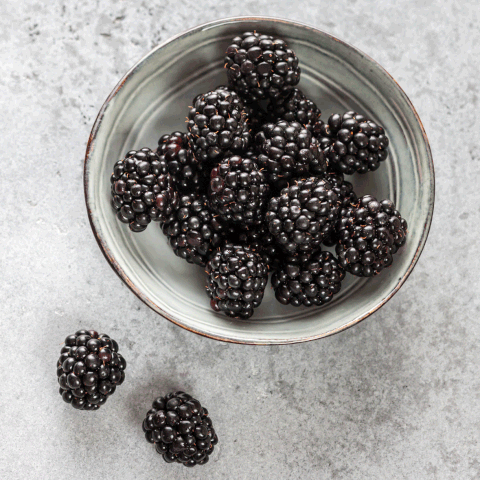
Getty Images
Known for their tart flavor and dark hue, blackberries are rich in antioxidants and fiber, Callins says. Additionally, they’re also packed with immunity-boosting vitamin C. Blackberries contain several minerals as well—including calcium, potassium, and magnesium—all of which are involved in bone health and nerve regulation.
If blackberries are too tart for your liking, pair them with sweeter ingredients to tone down their tartness. Maple syrup and honey are great choices, but sweeter berries (like strawberries or blueberries) work just as well. You can also use them in recipes where sweetener is also added, such as crumbles, chia pudding, or jellies and jams, suggests Callins.
Raspberries
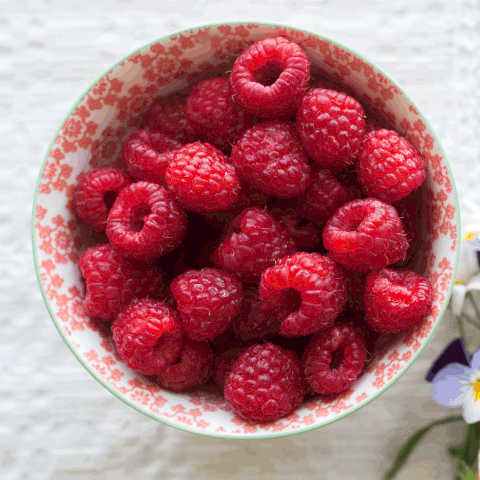
Getty Images
When you nosh on one cup of raspberries and you’re getting 32 milligrams of vitamin C, which is about half your daily requirement. You’ll also fuel up on antioxidant anthocyanins, which are abundant in raspberries. To top it off, the juicy red-pink berries offer gut-friendly fiber and minerals like calcium, potassium, and magnesium, vital for healthy bones and nerves, as mentioned.
“Raspberries are one of the sweetest berries, with a bright flavor and jammy texture,” Pasquariello says. Add them to the smoothies, yogurt bowls, oatmeal, cereal, or any dish that needs a punch of color and sweetness. “They’re also a great addition to salads, and you can even mash them into a quick jam to eat on toast with nut butter,” she suggests. “Other [ingredients] that are delicious with raspberries include goat cheese, almonds, chocolate, ginger, thyme, and mint.”
Acaí Berries
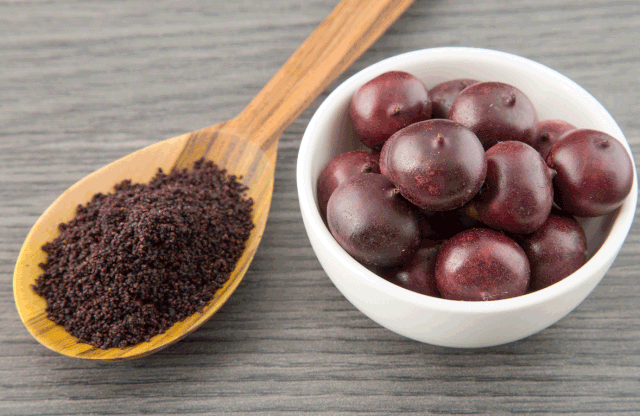
Getty Images
Acaí berries are a fantastic source of vitamin A, vitamin C, and iron, says Pasquariello. They’re also a great source of fiber, a key nutrient that promotes regular bowel movements, manages blood cholesterol, and increases satiety. Furthermore, “acaí offers antioxidants and anti-inflammatory benefits, thanks to its polyphenols, flavonoids, and procyanidins,” she adds.
Fresh acaí berries are super perishable, so you probably won’t find them in the produce section at your local grocery store. Instead, they’re typically sold as powders or frozen puree in packets. In these forms, acaí is typically blended into smoothies with a creamy base (like milk or yogurt) and frozen berries or bananas, Pasquariello says. You can also add a sweetener, like honey or maple syrup, as acaí has a slightly tart, vanilla-like flavor that’s a bit earthy and herbaceous. Acaí powder can also be mixed into recipes like pancakes, muffins, and yogurt for a burst of nutrients and color.
Strawberries
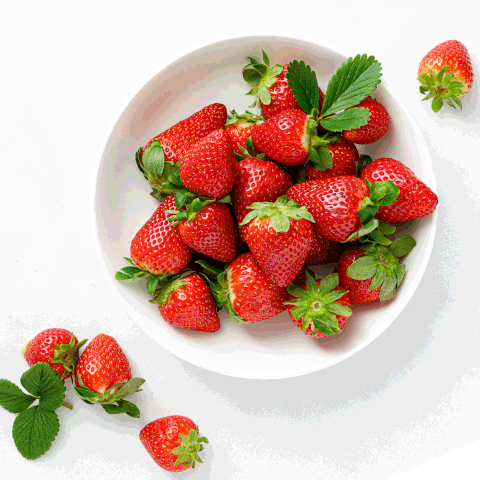
Getty Images
As a top source of vitamin C, strawberries are some of the healthiest berries you can eat. One cup of whole strawberries holds 85 milligrams of vitamin C, which is more than the recommended daily amount of 75 milligrams for women (and close to the 90 milligram requirement for men). This is great news for your immune system, as white blood cells (i.e., the cells of the immune system) rely on vitamin C to properly find and destroy sickness-causing germs. Vitamin C is also needed to make collagen, the main structural protein in your skin. Additionally, strawberries contain folate (vitamin B9) and potassium, which are needed for healthy red blood cells and blood pressure, respectively.
“As with other fresh berries, strawberries are a delicious addition to cereal, oatmeal, smoothies, salads, and yogurt parfaits,” Pasquariello says. They’re equally divine in baked goods, and they pair beautifully with fresh cream or yogurt and a drizzle of olive oil, honey, or both. Need some culinary inspo? Pasquariello recommends pairing strawberries with mint, basil, creamy cheeses, and, of course, chocolate.
Related: 10 Low-Sugar Fruits That Won't Make Your Blood Sugar Spike
Mulberries
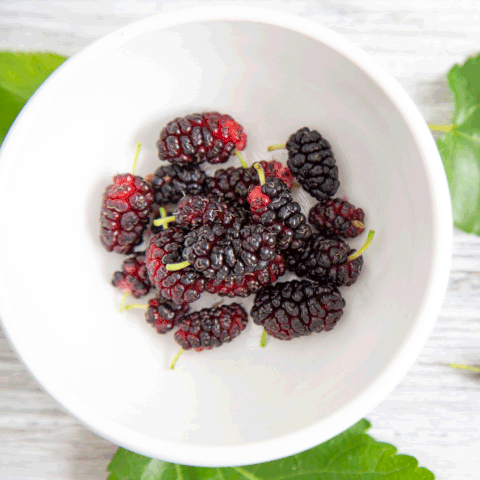
Getty Images
Mulberries are another nutritious berry option—they’re impressively high in unsaturated fatty acids, or “good” fats, which can help manage high blood cholesterol levels, potentially lowering the risk for heart disease. According to Callins, mulberries are also rich in immune-boosting vitamin C, along with calcium, potassium, and magnesium—three minerals that act as electrolytes and regulate nerve and muscle function.
Mulberries, like acai berries, are highly perishable, Callins explains, so they’re often sold in powdered or dried forms. “Mulberry powder is delicious in fruit tea and smoothies, [while] dried mulberries are great in granola, yogurt parfait, or sprinkled in cereal and oatmeal,” she says, adding that you can also add them to protein energy bites for a bit of natural sweetness, she suggests.
Cranberries
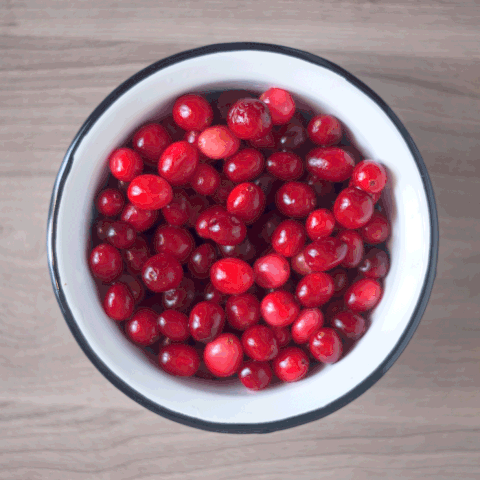
Getty Images
Oxidative stress is no match for cranberries, which are rich in antioxidants like anthocyanins and flavonoids. The deep-red orbs also contain vitamins C, E, and K, which boast antioxidant properties as well, according to Callins. But if cranberries had a claim to fame, it would be their uniquely high content of proanthocyanidins, an antioxidant that can reduce the risk of urinary tract infections (UTIs). Proanthocyanidins work by stopping E. coli bacteria from sticking to cells in the urinary tract, thus preventing UTIs.
“Cranberries are very tart, so pair them with something sweet [to make] them easier to consume,” Callins suggests. You can’t go wrong with a classic cranberry sauce, which pairs well with yogurt, whipped feta, and cottage cheese—not just Thanksgiving food! Cranberries can also be added to baked goods, used as garnish for mocktails, or tossed in warm salads; they’re especially tasty with fall and winter ingredients like pecans, quinoa, and apples.
Goji Berries
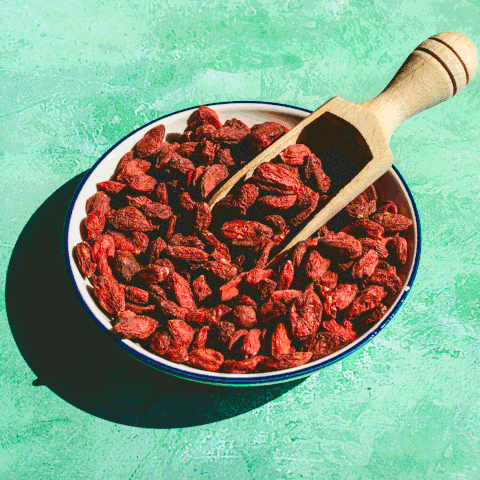
Getty Images
Due to their high content of gut-friendly fiber, goji berries are some of the healthiest berries you can eat. They’re also a good source of iron (needed for healthy red blood cells) and vitamin A (supports good eyesight), Pasquariello says. Most notably, goji berries are packed with carotenoids, or red-orange plant pigments. Like anthocyanins, carotenoids reduce oxidative stress and inflammation in the body, making them important compounds for staving off disease.
At the supermarket, goji berries are typically sold dried, though you can also find it as a powder, says Pasquariello. Compared to other berries, they have a tangier flavor, making them a stellar partner for ingredients with deep nutty flavors like oats, coconut, and chocolate. If you’re unsure how to use dried goji berries, try adding them as a nutritious topper for smoothies, smoothie bowls, oatmeal, yogurt parfaits, or cereal, Pasquariello suggests.
Related: 6 Nutrient-Packed Foods to Eat for Better Brain Health
For more Real Simple news, make sure to sign up for our newsletter!
Read the original article on Real Simple.

